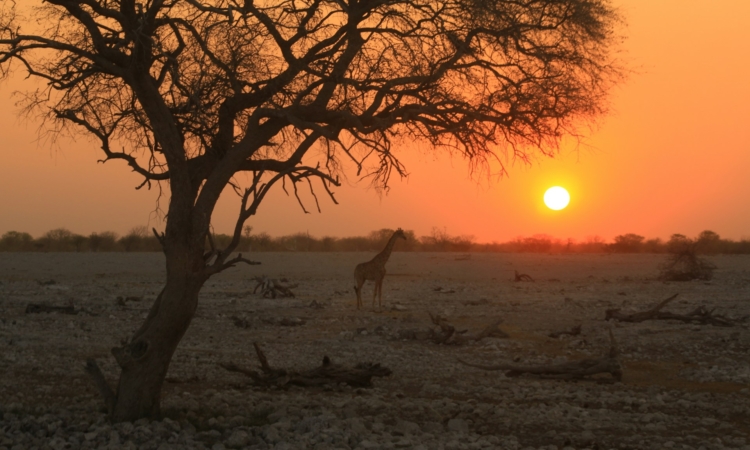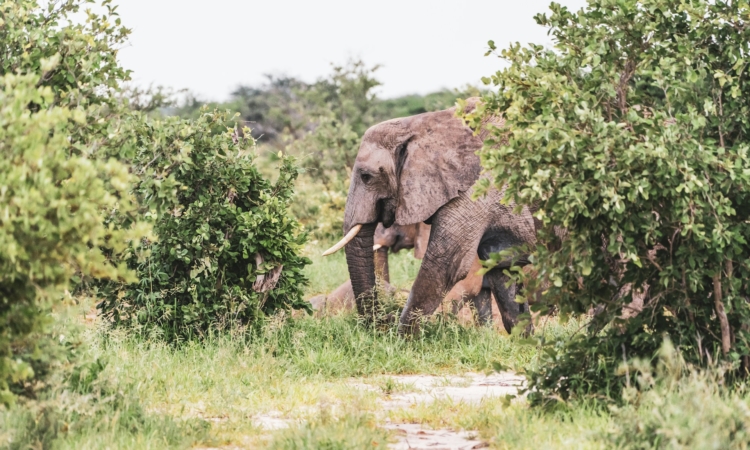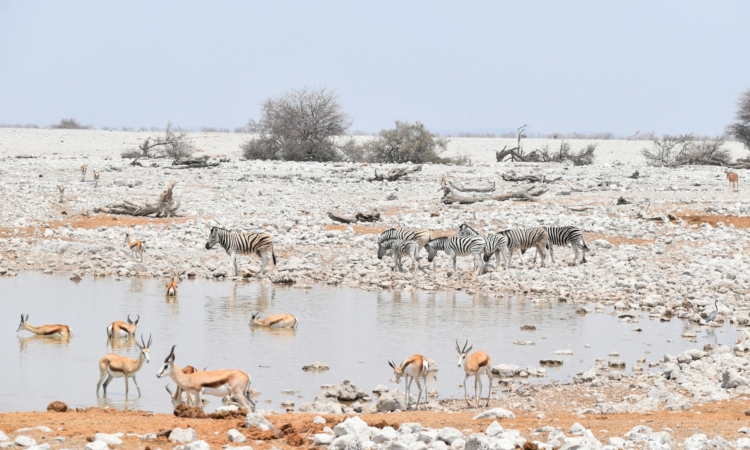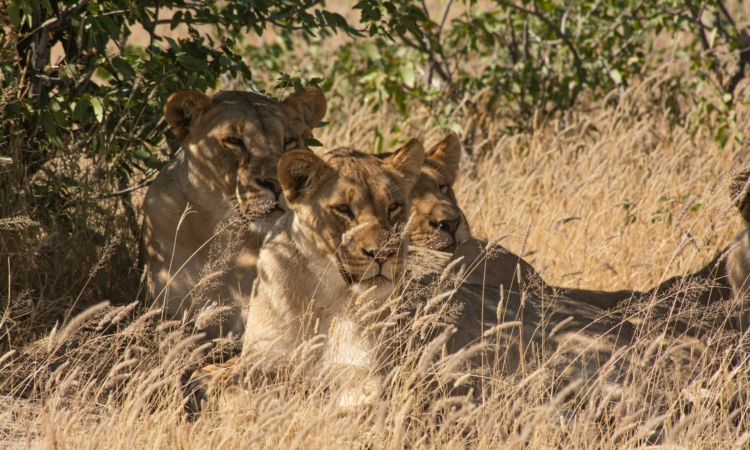March is the last part of the rainy season in Etosha National Park, although light showers can still fall in the early mornings or afternoons. The amount of rain slowly decreases this month, with an average of 40mm to 80mm. Even though the rains are less frequent, some wet days remain, and travelers may still see patches of water across the park.
Daytime temperatures in March are warm, usually between 28°C and 32°C. Nights are cooler, dropping to about 15°C to 20°C. The air often feels fresher after the rains, but as the month goes on, it becomes drier and dustier. Winds normally blow at speeds of 10 to 20 km/h, sometimes raising dust from the ground as the land begins to dry.
The park’s landscape also starts to change. The green grasses and thick bush from the wet season begin to fade and thin out. Pools of water in small pans dry up slowly, leaving muddy edges that attract birds and small animals. After occasional late showers, water may still collect in shallow pans, but most animals start gathering at the main waterholes where water remains reliable.
Wildlife activity in March is rewarding. Herbivores such as zebras, springboks, blue wildebeest, impalas, giraffes, oryx, and kudus are often seen grazing in the open plains. Predators including lions, cheetahs, leopards, and hyenas move more quietly, keeping close to the herds as they look for prey. With fewer bushes to hide in, spotting these animals becomes easier. Bird activity is also high, as many species feed near the remaining pools of water.
Some roads in the park may still be muddy or slippery because of the late rains. A standard vehicle can be used on main routes, but a 4×4 is better for remote tracks. Visitor numbers are generally lower in March, which gives travelers a quieter safari experience.
Accommodation is easier to book during this month, and lodges often feel less busy, making stays more personal. For the best game viewing, mid-morning and late afternoon visits to waterholes are recommended. Travelers should also carry insect repellent, as mosquitoes remain active, and wear long sleeves in the evenings for extra protection.
Find out more about Okondeka waterhole and see our detailed guide on Etosha in February.







